The tragic railway derailment this week has led to changes in procedure by the Canadian Pacific railway.
The new rules will now require handbrakes to be set on trains making emergency stops in mountain routes.
Train number 301 was on a trip west through the Rocky Mountains with three locomotives and 112 grain cars.
It was parked at a siding for a crew change at the start of a 2.2 per cent grade over five miles through the Kicking Horse Pass, one of the steepest railway grades in N.America.
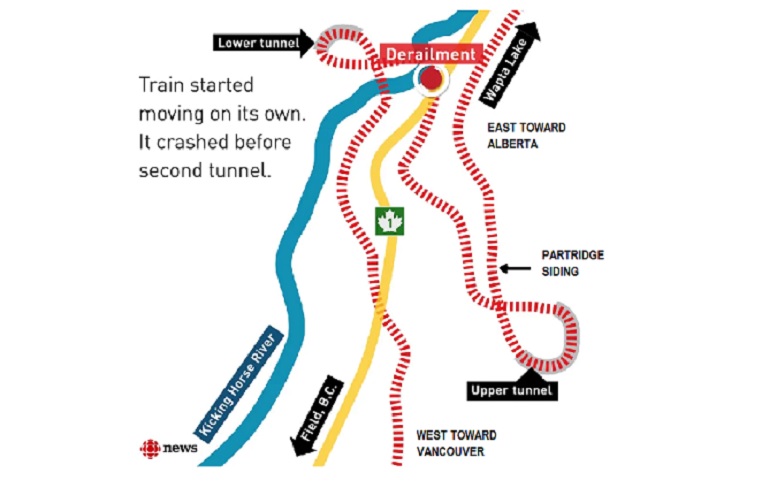
The train had been parked at the siding and rolled west picking up speed through the upper tunnel before the crash beside the Trans Canada highway and into the steep ravine at the Kicking Horse River (CBC News)
After sitting for two hours in extreme cold with the airbrakes on and set in emergency mode, the new crew had just boarded and were still preparing when the train began rolling on its own at about 1 a.m. The crew apparently radioed that they could not slow the train where speed through the area is normally kept below 32 km/h, due to the steep turns and bends through the section. It is estimated the speed was well in excess of the maximum when it left the track at a curve and most of the cars tumbled down some 60 to 80 metres in the steep ravine, killing the three crew members.
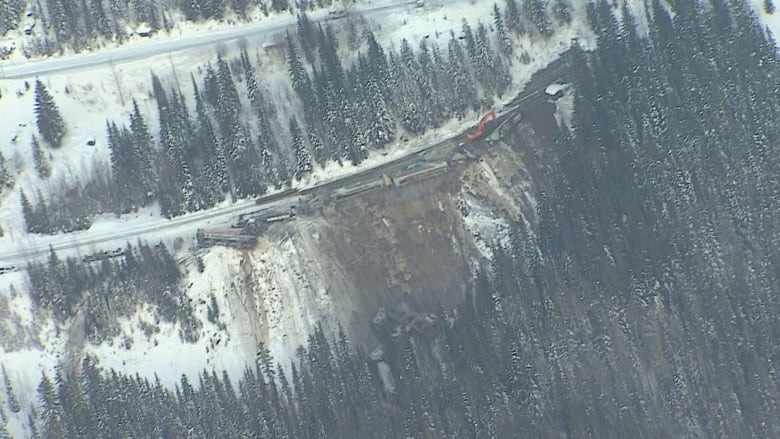
Only 13 cars and the last locomotive did not tumble down the steep embankment. (CBC)
The Transportation Safety Board is still investigating the accident but there is speculation the extreme cold may have played a role in the inability of the air brakes to stop the train. In the cold, seals in the brake cylinders and airline connectors shrink and release pressure on the brakes.
Also, once set in emergency mode, the brakes need to be released and the air pressure system recharged which can take several minutes, especially in cold weather.
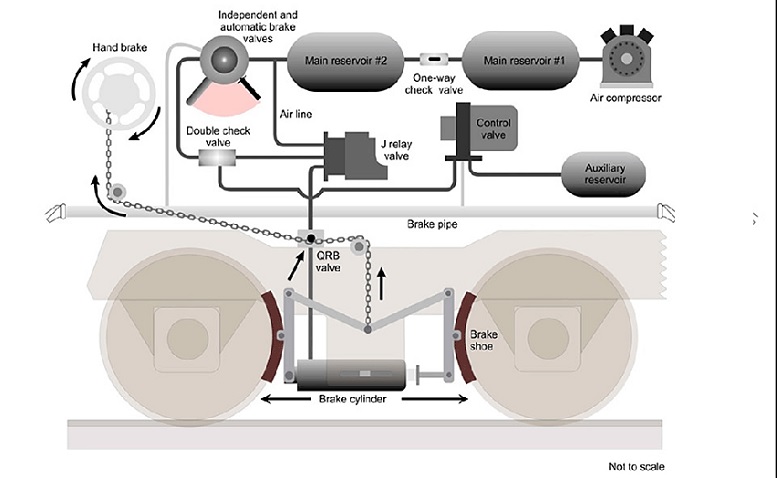
Train braking system (Transportation Safety Board)
In 2006 a Canadian National Railway freight train derailed in a fatal accident that killed two crew and injured a third near Lillooet B.C. on a steep grade. The investigation found that ageing airbrakes could not cope with the load on a steep grade.
One of Canada’s worst rail accidents occurred in the small town of Lac Megantic Quebec when a parked and unoccupied train of oil tankers rolled into the town at high speed. It derailed and exploded in a massive fireball destroying much of the centre of town and killing 47 people on July 6, 2013.
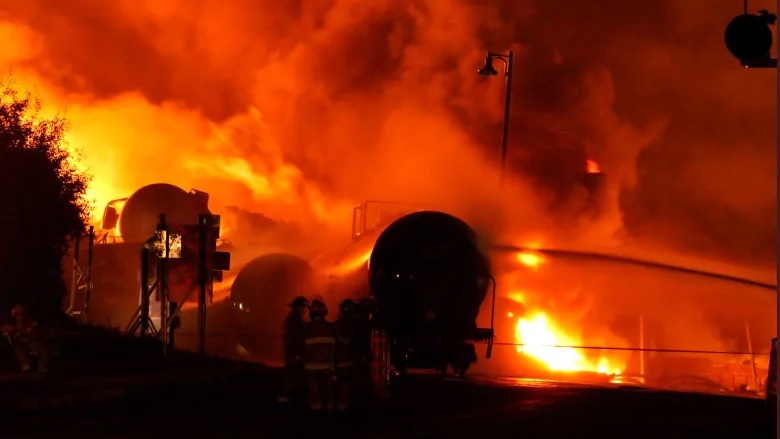
A giant fireball after a runaway train crashed into the town of Lac Megantic, Quebec in 2013 killing 47 people. The few handbrakes set were not enough to hold the train on the grade leading into town. (Transportation Safety Board- Reuters)
In that case the airbrakes had been set and only a few handbrakes on the 72 car train. Setting handbrakes is a time consuming and labour intensive process.
At one point during the night, after putting our a small fire, the locomotive powering the air brake system was shut off. A TSB investigation later ruled that among other problems, the small number of handbrakes set were not enough to stop the train from moving uncontrolled at high speed into the town.
Additional information-sources
- TSB investigation to date
- Globe and Mail: J Giovannetti: Feb 6/19: Investigation looks at air brakes
- CTV Calgary: C Schmidt: Feb 4/19: Three killed in crash
- CBC: S Rieger: Feb6/19: Railway through the mountains reopened
- CBC: Feb 6/19: a look at what happened
- Calgary Herald: S Logan: Feb 5/19: Crewmen killed identified
- TSB findings Lac Megantic
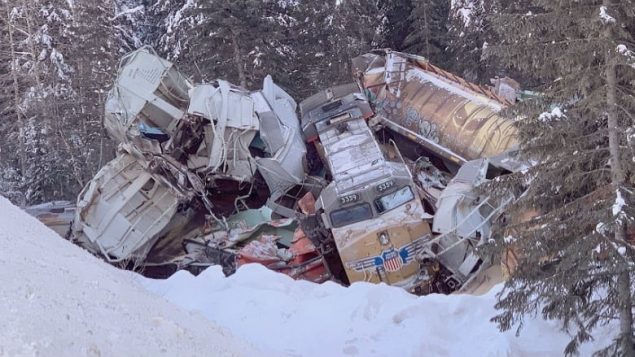






For reasons beyond our control, and for an undetermined period of time, our comment section is now closed. However, our social networks remain open to your contributions.